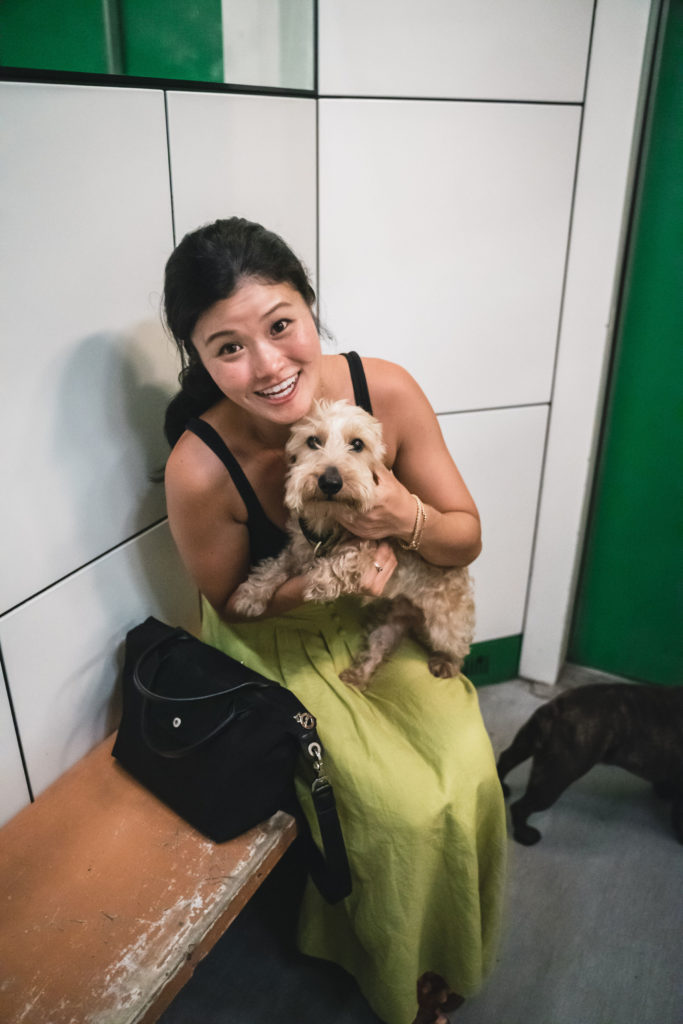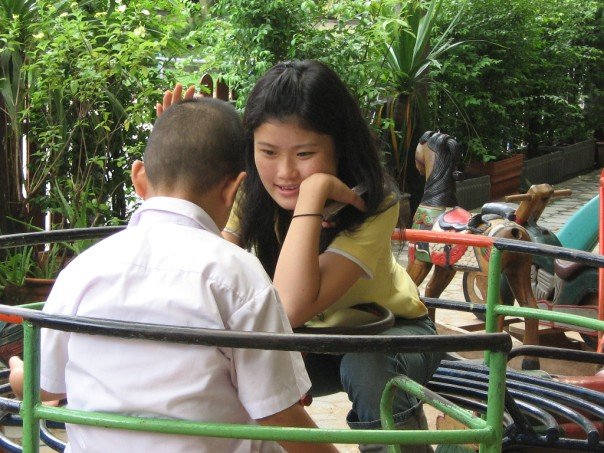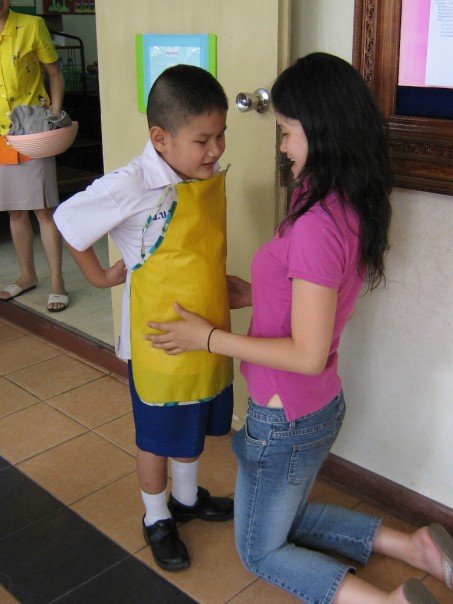What is occupational therapy?
Occupational therapy (OT) is a health profession that supports the health and wellbeing of individuals from across the lifespan. The primary goal of OT for children with special needs is to get their body, mind and environment ready for playing and learning.
Your child’s teacher, therapist or yourself will want to contact an OT when the child experiences difficulties with:
- changes in expectation like taking a different mode of transportation, implementing a new rule to a familiar game, settling in a new home or school from relocating
- managing big emotions that stops activities
- coordinating their bodies to sit with the group, stand in line, write legibly, or playing tag
- organizing their belongings, handing in work on time, or remembering details
- staying on task because they’re easily distracted or because they don’t know what to do next
- process thinking like in math or story writing
- keeping up with the pace and expectations of general class learning
- making, keeping and maintaining friendships
These difficulties may or may not be linked to a diagnosis or condition. OT most commonly work with kids experiencing difficulties due to autism spectrum disorder, attention deficit disorders, cerebral palsy, anxiety, and developmental delays.
OT areas of practice
In recent decades, occupational therapy for children has been proven to be more effective outside of the hospital, rehabilitation centers and clinics. Children are finding it more useful to learn skills and practice strategies in their natural environments where they spend their days— home, school and community. This shift also allows for the OT to directly identify risks and barriers that children experience as they do what they want, must, or are expected to do.
With the use of technology, families living in remote areas can access OT without needing to travel far or minimizing consistency. In collaboration with on-site caregivers, OT can observe the child in their most comfortable state without a stranger in the room and provide guidance for improving support.
Your child may benefit from working with an OT if they want to develop strategies to:
- At home
- get a good night’s sleep
- eat foods that keep the brain and body healthy
- help out with chores around the house
- look after a younger sibling
- study effectively
- prepare for school
- At school
- learn and challenge themselves
- ask for help
- express their learning
- stay with the group activity
- share classroom resources with classmates
- have a calmer mind and body
- be a caring friend
- resolve conflicts with peers
- In the community
- play with others at the park
- get from home to the skatepark and back safely
- go to a friend’s house
- find an interest and hone their skills for mastery
The OT designs meaningful activities that promote improvement in a combination of skills related to sensory, communication, visual, movement and social development. This is why OT sessions with children often look like play for increased engagement and high retention.
How do you know when to seek OT help?
It can feel overwhelming to process all of the information that comes before seeing a professional. Depending on where you currently live or rely on for health and educational support, accessing occupational therapy could look very different between countries.
You’ll want to contact an OT if your child:
- is falling behind with learning even though they’re doing their best
- hasn’t made friends at school
- experiences difficulty getting out of certain moods
- has lost interest in doing something that used to mean a lot to them
- gets frustrated over seemingly mundane things
- doesn’t like certain ‘feels’ of food, clothing or sounds
- gets stuck in doing something and can’t move onto a new task
- cannot explain what happened or why
- is different compared to how their other sibling(s) developed
- is not coping well after a significant lifestyle change like newborn baby in the family or parent’s career change that requires more business trips
An OT can help to figure out what’s getting in the way of your child doing something at home or school. Through direct observation, family and teacher interviews, and standardized testing, an occupational therapist can provide your family and the support team to reveal a fuller picture of your child. This is especially helpful as OTs are trained to look for patterns and hidden cues that could be easily overlooked.
The OT process
As health professionals, measuring progress is key to ensure effective therapy. The following steps ensure OT continues to be beneficial for your child:
- Referral
- Initial interview
- Assessment
- Goal-setting and action planning
- Execution
- Review for progress, goal/strategy adjustments, or discontinuation
Steps 2 to 6 are repeated until OT is no longer necessary for the child.
Many children and families benefit from having a multidisciplinary team including but not limited to a child psychologist, speech therapist, physiotherapist along with the child’s teacher. A diverse care team requires careful coordination and many families find relief in appointing the role of case manager to one of the professionals on the team. The case manager would be the main point of contact for any communication regarding the child.
Download my Client Starter Kit!
5 templates to start your therapy work feeling confident with every client

Where can I find a pediatric occupational therapist? — International considerations
Occupational therapy is different in every country. There are different training expectations and registration requirements for countries where OT is recognized. As of 2020, the World Federation of Occupational Therapy brings together 101 national and regional member organisations, so you might find that OT is not a recognized profession where you currently live.
An OT practitioner should have current registration with a recognized board of practitioners. While engaging with the globally mobile community, a qualified OT should be transparent about their registration, licensing and training history. Professional associations make sure registered members are continuing to educate themselves in best practices and current evidence.
OT rates
Here are some things to consider when you’re in a cross-cultural situation:
- What language should sessions be conducted in? Home language? School language?
- Do you have access to specialized equipment and materials in the resident country? How can you access this?
- For teletherapy, do you have a stable internet connection and reliable computer setup?
- How can you prioritize and make OT sessions fit best into the child and family’s schedule?
- How much parent and teacher involvement is realistically possible? Is one parent responsible? Could both parents make it to meetings?
If you are struggling to keep up with the demands of your child. Or if you’re feeling alone in this process of parenting and feel stuck. Please reach out to a health professional — even if your initial contact is not a good match, a responsible professional will refer you to the person that can better support you, your child and your family.
Resources
American Occupational Therapy Association — Learn About OT For Children & Youth
What can an occupational therapy consultant do for your child?





